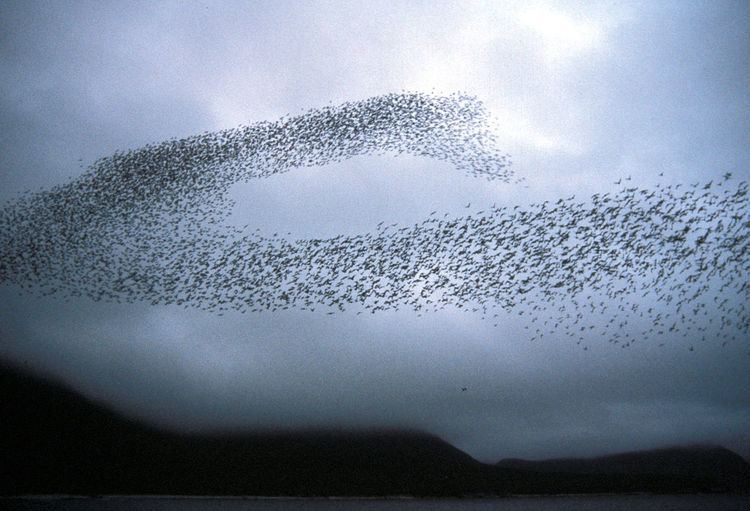 | ||
Many experimental realizations of self-propelled particles exhibit a strong tendency to aggregate and form clusters, whose dynamics are much richer than those of passive colloids. These aggregates of particles form for a variety of reasons, from chemical gradients to magnetic and ultrasonic fields. Self-propelled enzyme motors synthetic nanomotors also exhibit clustering effects in the form of chemotaxis. Chemotaxis is a form of collective motion of biological or non-biological particles toward a fuel source or away from a threat, as observed experimentally in enzyme diffusion and also synthetic chemotaxis or phototaxis. In addition to irreversible schooling, self-propelled particles also display reversible collective motion, such as predator–prey behavior and oscillatory clustering and dispersion.
Contents
Phenomenology
This clustering behaviour has been observed for self-propelled Janus particles, either platinum-coated gold particles or carbon-coated sillica beads, and magnetically or ultrasonically powered particles, as well as for colloidal particles with an embedded hematite cube and composed of slowly-diffusing metal ions, and for enzyme molecule diffusion. In all these experiments, the motion of particles takes place on a two-dimensional surface and clustering is seen for area fraction as low as 10%. For such low area fractions, the clusters have a finite mean size while at larger area fractions, larger than 30%, a complete phase separation has been reported. The dynamics of the finite-size clusters are very rich, exhibiting either crystalline order or amorphous packing. The finite size of the clusters comes from a balance between attachment of new particles to pre-existing clusters and breakdown of large clusters into smaller ones, which has led to the term of "living clusters".
Mechanism for synthetic systems
The precise mechanism leading to the appearance of clusters is not completely elucidated and is a current field of research. Three different mechanisms have been proposed, which could be at play in different experimental setups.
First, self-propelled particles have a tendency to accumulate in region of space where they go slower; then, self-propelled particles tend to go slower where they are denser, because of steric hindrance. A feedback between these two mechanisms can lead to the so-called motility induced phase separation. This phase separation can however be arrested by chemically-mediated inter-particle torques or hydrodynamic interactions, which could explain the formation of finite-size clusters.
Alternatively, clustering and phase-separation could be due to the presence of inter-particle attractive forces, much as in equilibrium suspensions. Active forces would then oppose this phase separation by pulling apart the particles in the cluster, following two main processes. First, single particles can evaporate if their propulsion forces are sufficient to escape from the cluster. Then, a large cluster can break into smaller ones due to the build-up of its internal stress: as more and more particle enter the cluster, their propulsive forces add up until they break down its cohesion. Diffusiophoresis is also a commonly cited mechanism for clustering and collective behavior, involving the attraction of particles to each other and in response to ion gradients. Diffusiophoresis is a process involving the gradients of electrolyte or non-electrolyte concentrations interacting with charged or neutral particles in solution and with the double layer of any walls or surfaces.
In experiments, arguments have been put forward in favour of both mechanisms. For carbon-coated sillica beads, attractive interactions are supposed to be negligible and phase-separation is indeed seen at large densities. For other experimental systems, attractive forces could however play a larger role.
Reviews
Clustering behavior in self-propelled particles and enzyme motors is discussed in great detail in sections on Collective Behavior, Chemotaxis, and/or Diffusiophoresis within several reviews by leading researchers in the self-propelled particles and nanomotors fields.
